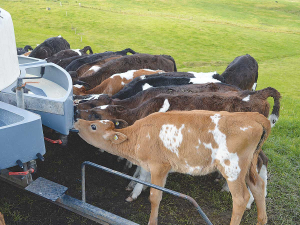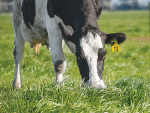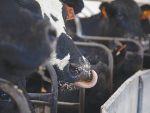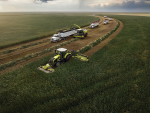If you have been reading the rural press in recent weeks it’s likely you are scratching your head at some of the claims which have been made about whole or skim milk replacers in comparison to whey-based milk replacers. You may also be feeling a sense of déjà vu.
Much has been made of the importance of curd formation when assessing the quality of milk replacers, but as anyone who has done some reading around the different milk replacers available on the market will tell you, whey-based milk replacers simply do not curd.
Some suppliers of whole or skim milk powder-based products would like you to believe that this absence of curd formation means that whey-based products are inferior, but like most things, it’s not as simple as that!
For over twenty years, leading researchers around the world have been questioning the importance and physiological role of curd formation in milk or milk replacer.
Leading researchers from the US, where independent surveys have found that at least 34.8% of all calves are fed only milk replacer, have in fact questioned the criticism directed towards non-casein based milk replacers when the assessments are carried out using tests and studies designed for casein based milk replacers.
So it is disappointing to see dated thinking and research making its way back into our rural press, with little consideration given to the extensive peer-reviewed and independent research carried out around the world which has been focused on improving our understanding of the health and nutrition of the young preruminant animals and, most importantly, improving animal welfare.
The results of a New Zealand trial carried out in 2004, over 15 years ago, have been used recently to support the argument that whey-based milk replacers are not suitable for young calves.
What the people who refer to this trial as an example of the superiority of casein-based milk replacers don’t tell you, is that there were dramatic differences in the energy content of the skim- and whey- based milk replacers compared in the 2004 trial.
Although the researchers formulated the milk replacers to have a similar energy content, laboratory analysis of the milk replacers used in the trial shows that the whey-based milk replacer contained 24g less fat per kilogram than the casein-based milk replacer.
As calves were fed the same amount of either skim or whey based milk replacer each day (500g/calf/day in the case of calves fed twice a day), this means that the calves on the whey based milk replacer consumed almost 5% less fat and subsequently almost 10% less energy.
It’s no surprise then that (in the 2004 trial), the calves fed the whey-based milk replacer grew 4% slower than the calves fed the skim milk.
The effect of lower energy intakes on calves which are stressed or subjected to challenging conditions is well known and any good calf rearer will tell you that you that if calves are under fed (for example, if you are using the wrong mixing rate) they are more susceptible to disease challenge. Once again, it’s no surprise that the calves fed on the whey-based milk replacer were more susceptible to Salmonella.
Although the researchers do report in their paper that all milk replacers in the 2004 trial were formulated and manufactured in New Zealand, they neglect to explain the implications of this.
Not only were there dramatic differences between the technologies available in New Zealand and countries such as Netherlands for the manufacture of whey-based milk replacers in 2004, but these differences are even greater now.
The results of a trial comparing products formulated and manufactured in New Zealand in 2004 simply cannot be used as a predictor of the performance under New Zealand conditions of high quality, scientifically researched, whey based milk replacers which are manufactured to extremely high standards in the competitive European and American markets today.
At AgriVantage, we believe that both casein-based milk replacers and whey-based milk replacers have their place, offering different benefits to animals. The key for us is providing you with quality, scientifically formulated milk replacers. What you decide to feed your animals will depend on your rearing objectives.
• Natalie Chrystal, is a nutrition consultant to AgriVantage











